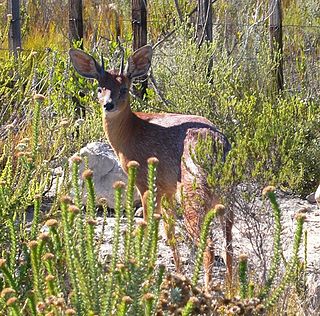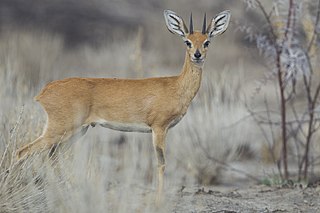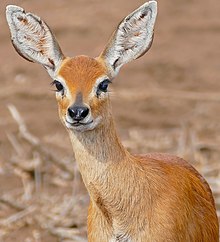
The Antilopines are even-toed ungulates belong to the family Bovidae. The members of Antilopini are often referred to as true antelopes, and are usually classified as the only living representatives of the Antilopinae. True antelopes occur in much of Africa and Asia, with the highest concentration of species occurring in East Africa in Sudan, Eritrea, Ethiopia, Somalia, Kenya, and Tanzania. The saigas and Tibetan antelopes are related to true antelopes (Antilopinae) and sheep and goats (Caprinae), but are often placed in their own subfamily, Saiginae. These animals inhabit much of central and western Asia. The dwarf antelopes are sometimes placed in a separate subfamily, Neotraginae, and live entirely in sub-Saharan Africa. The Antilopinae are a subfamily of Bovidae that roam the East African savannas and deserts and they have acclimated to possess wider insertion muscles to enable them to avoid predators in the open savanna.

The oribi is a small antelope found in eastern, southern and western Africa. The sole member of its genus, it was described by the German zoologist Eberhard August Wilhelm von Zimmermann in 1783. Eight subspecies are identified. The oribi reaches nearly 50–67 centimetres (20–26 in) at the shoulder and weighs 12–22 kilograms (26–49 lb). It possesses a slightly raised back, and long neck and limbs. The glossy, yellowish to rufous brown coat contrasts with the white chin, throat, underparts and rump. Only males possess horns; the thin, straight horns, 8–18 centimetres (3.1–7.1 in) long, are smooth at the tips and ringed at the base.

The Cape grey mongoose, also called the small grey mongoose, is a small mammal native to South Africa, Lesotho and southern Namibia.

Sharpe's or northern grysbok is a small, shy, solitary antelope that is found from tropical to south-eastern Africa.

The Cape or southern grysbok is a small antelope that is endemic to the Western Cape region of South Africa between Albany and the Cederberg mountains.
Grysbok may refer to the following species of African antelope:

The steenbok is a common small antelope of southern and eastern Africa. It is sometimes known as the steinbuck or steinbok.

The tribe Neotragini comprises the dwarf antelopes of Africa:

Phacochoerus is a genus in the family Suidae, commonly known as warthogs. It is the sole genus of subfamily Phacochoerinae. They are pigs who live in open and semi-open habitats, even in quite arid regions, in sub-Saharan Africa. The two species were formerly considered conspecific under the scientific name Phacochoerus aethiopicus, but today this is limited to the desert warthog, while the best-known and most widespread species, the common warthog, is Phacochoerus africanus.

The Albany thickets is an ecoregion of dense woodland in southern South Africa, which is concentrated around the Albany region of the Eastern Cape.
The Milnerton Racecourse Nature Reserve is a lowland conservation area located in the City of Cape Town, South Africa.
The Diep River Fynbos Corridor is a nature reserve located in the Blaauwberg region of Cape Town, South Africa. It forms part of the larger Table Bay Nature Reserve, which was established in June 2012.









